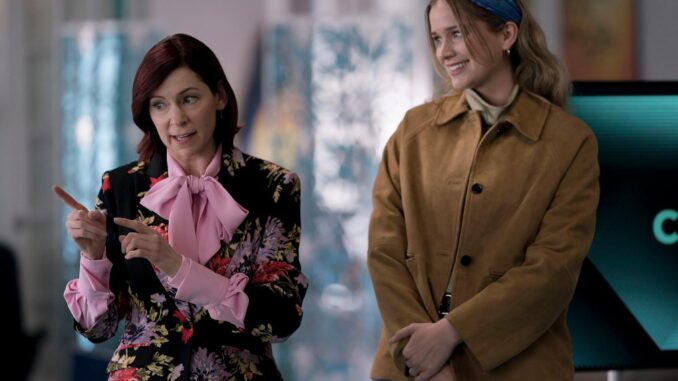
The landscape of American detective films and television has, for decades, been painted in shades of noir. From the trench-coated cynicism of Philip Marlowe to the grim, rain-swept streets of modern procedurals, the archetype of the brilliant, often tormented investigator has largely been defined by a hardened exterior, a world-weary gaze, and a penchant for the dark underbelly of human nature. This enduring, albeit compelling, tradition left a certain hunger for something different, a splash of color in a monochrome world. Enter Elsbeth Tascioni, a delightful anomaly who has burst onto the scene not just as a detective, but as a vibrant, much-needed breath of fresh air.
Elsbeth’s primary rebellion against the established order is her unapologetic aesthetic. In a genre dominated by muted palettes, severe suits, and the occasional blood-spatter, Elsbeth arrives in a riot of color and pattern. Her wardrobe is a defiant rainbow, a joyful explosion of floral prints, mismatched accessories, and hats that seem to belong more in a whimsical garden party than a crime scene. Her hair, often a playful cascade of curls, eschews the severe bob or practical ponytail for something altogether more expressive. This visual effervescence is not mere costume; it is a declaration. It instantly signals that this is not your typical detective story, and this is certainly not your typical detective. She doesn’t blend into the shadows; she illuminates them, her very presence a challenge to the grittiness that has become synonymous with truth-seeking. This visual departure alone serves as a jolt to the senses, a clear statement that intellect and optimism are not mutually exclusive with solving heinous crimes.
Beyond the sartorial splendor, Elsbeth’s personality is perhaps her most disarming weapon and her most refreshing attribute. Where cynicism often reigns supreme, Elsbeth introduces a disarming optimism, a genuine curiosity about people, and a seemingly rambling, yet utterly incisive, way of speaking. She appears, at first glance, endearingly ditsy, prone to tangential anecdotes and a certain social awkwardness that puts everyone around her – suspects and colleagues alike – at ease. This persona is a masterclass in strategic misdirection. People underestimate her, dismiss her as harmless, and in doing so, drop their guard. Her seemingly innocuous questions, peppered with genuine interest in a person’s hobbies or personal life, often unearth the very clues that a more aggressive, confrontational approach would never uncover. She doesn’t bark orders or deliver icy pronouncements; she coaxes, observes, and connects, making her investigative process feel less like an interrogation and more like an oddly charming, albeit pointed, conversation. This approach stands in stark contrast to the hardened gumshoe, proving that keen observation and empathetic understanding can be far more potent than brute force or icy logic.
Furthermore, Elsbeth’s investigative method offers a humanistic alternative to the purely procedural. While she is undoubtedly brilliant and deductive, her brilliance is often rooted in understanding human behavior, motive, and the subtle tells that betray guilt or anxiety. She doesn’t just see a crime; she sees the people entangled in it, recognizing the nuances of their emotions and the pressures that drive them. This empathetic lens allows her to peel back layers of deceit with a gentleness that paradoxically makes the truth more inescapable. Her cases often hinge on a moment of connection, a subtle psychological insight, rather than a purely forensic breakthrough. This elevates the detective narrative beyond mere puzzle-solving; it delves into the complexities of human nature, suggesting that understanding why someone commits a crime is as crucial as identifying who did it. This focus on the human element, imbued with her signature blend of warmth and shrewdness, transforms the often-grim pursuit of justice into a journey of insightful discovery.
In a genre often accused of becoming formulaic, Elsbeth Tascioni is a delightful anomaly, a beacon of creativity and charm. She proves that a detective can be quirky without being incompetent, intelligent without being arrogant, and colorful without being frivolous. By challenging the visual, personal, and methodological conventions of American detective films, she doesn’t just solve cases; she revitalizes the entire genre. Elsbeth is more than just a character; she is a vibrant statement, a much-needed exhale of relief for audiences yearning for a detective who sees the world in brilliant, hopeful technicolor, even as she confronts its darkest shadows. She truly is a breath of fresh air, reminding us that even in the pursuit of justice, there is room for joy, curiosity, and a fabulous hat.
